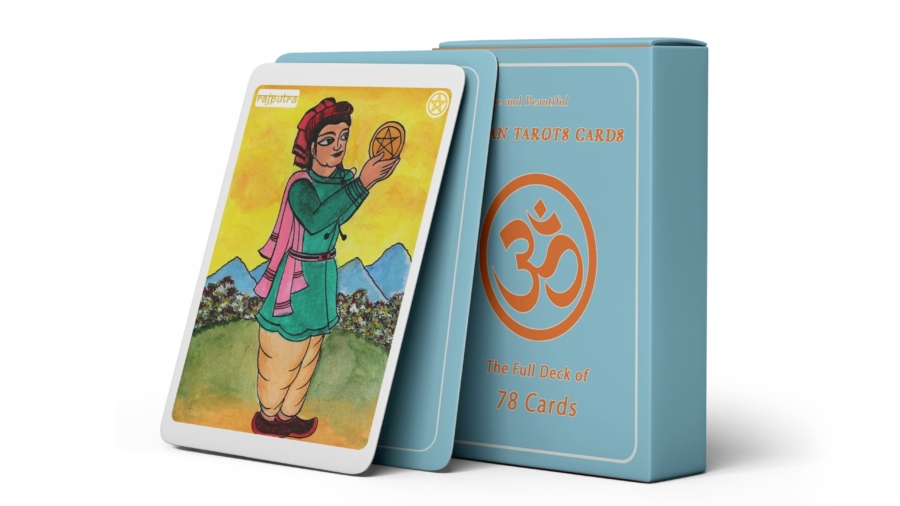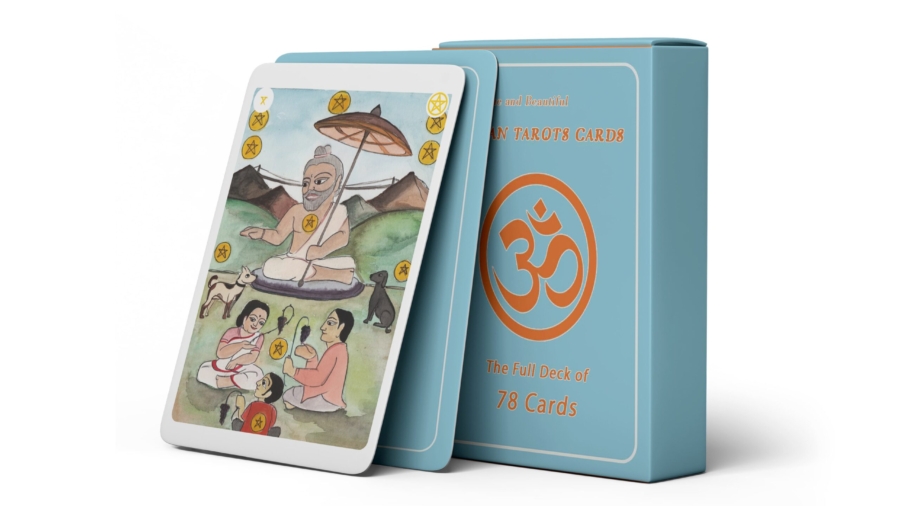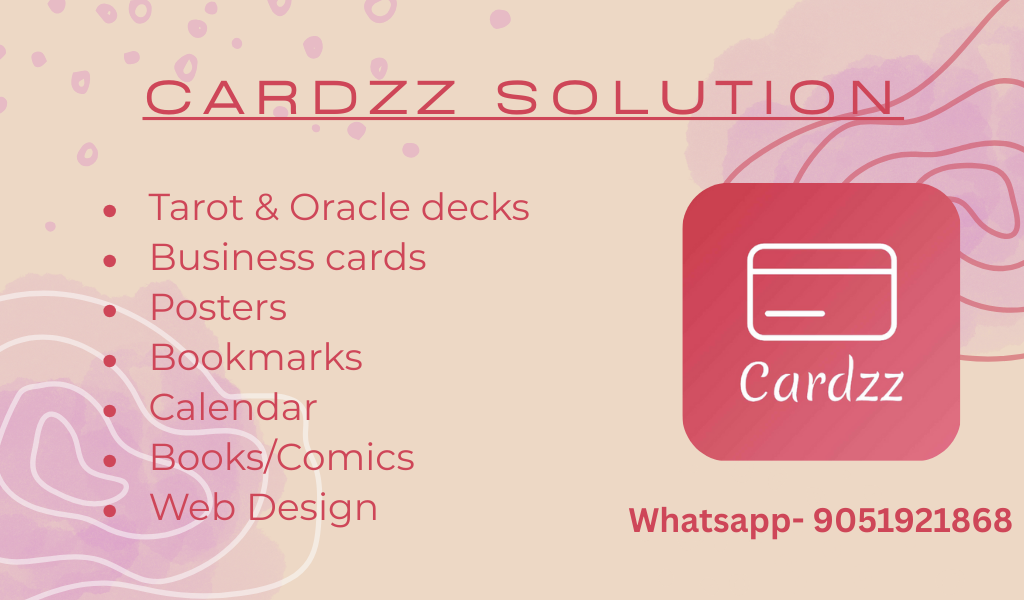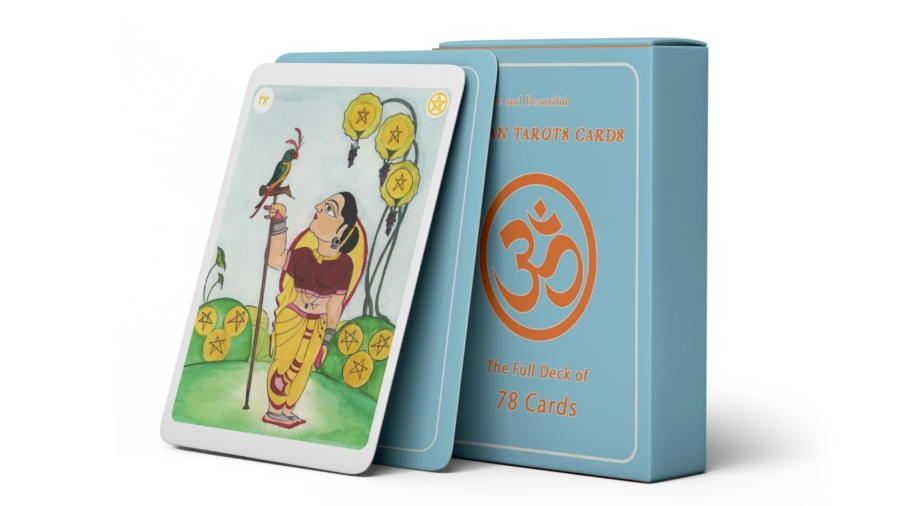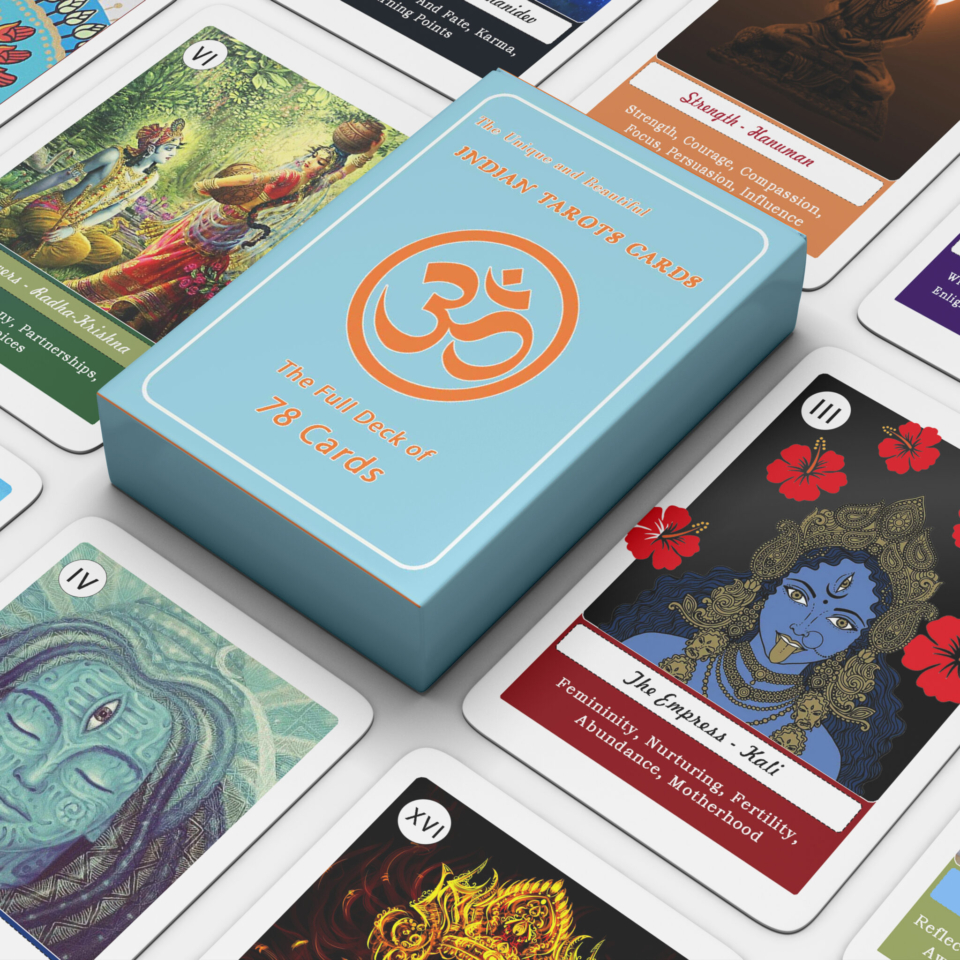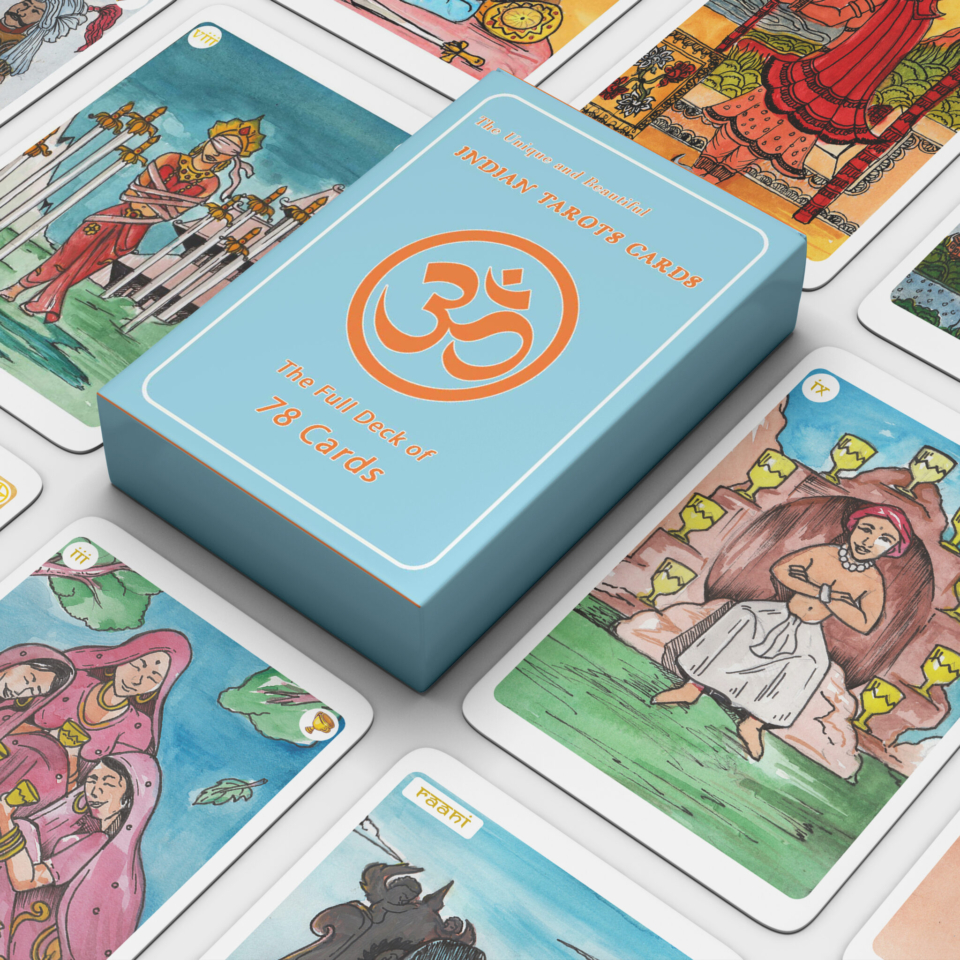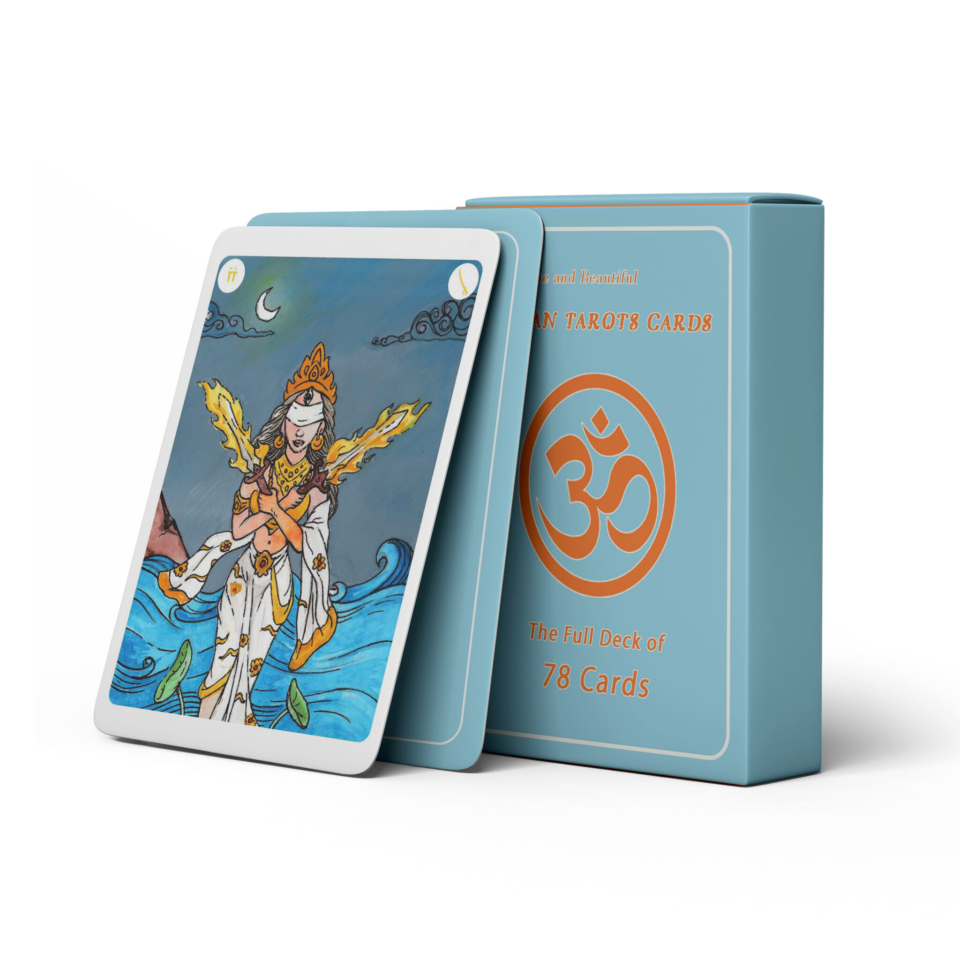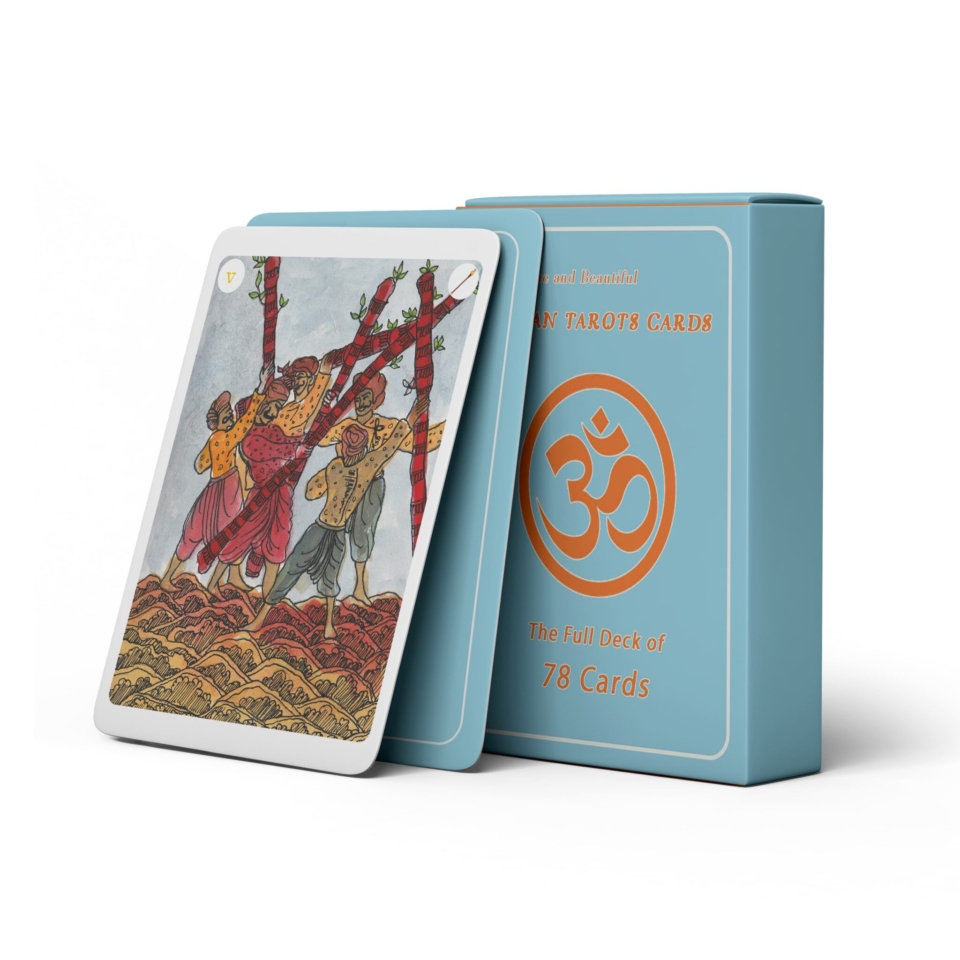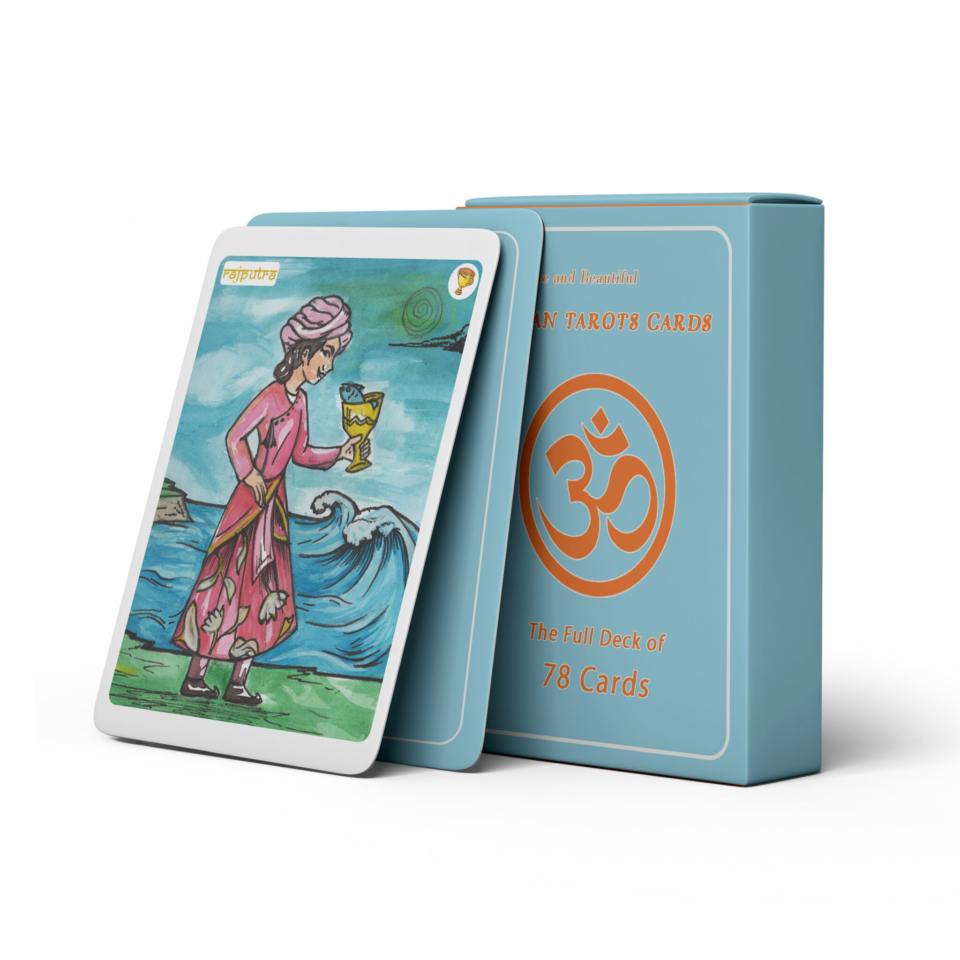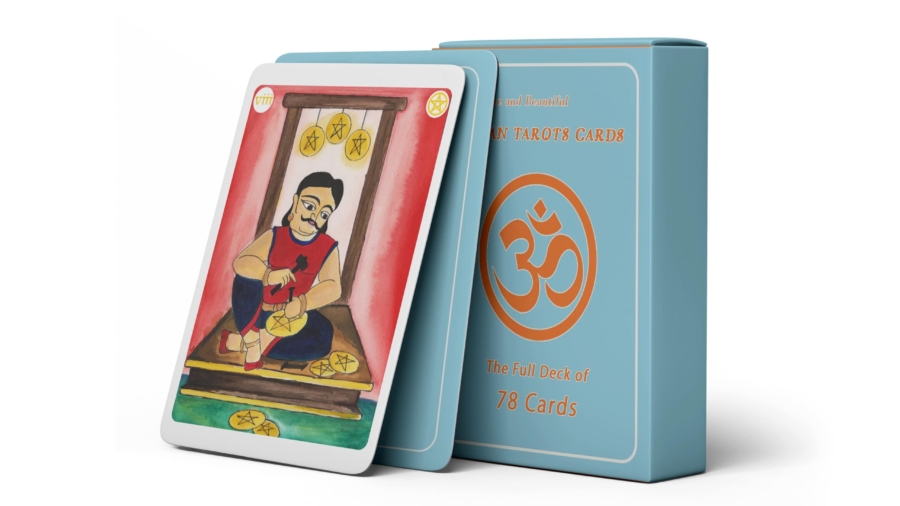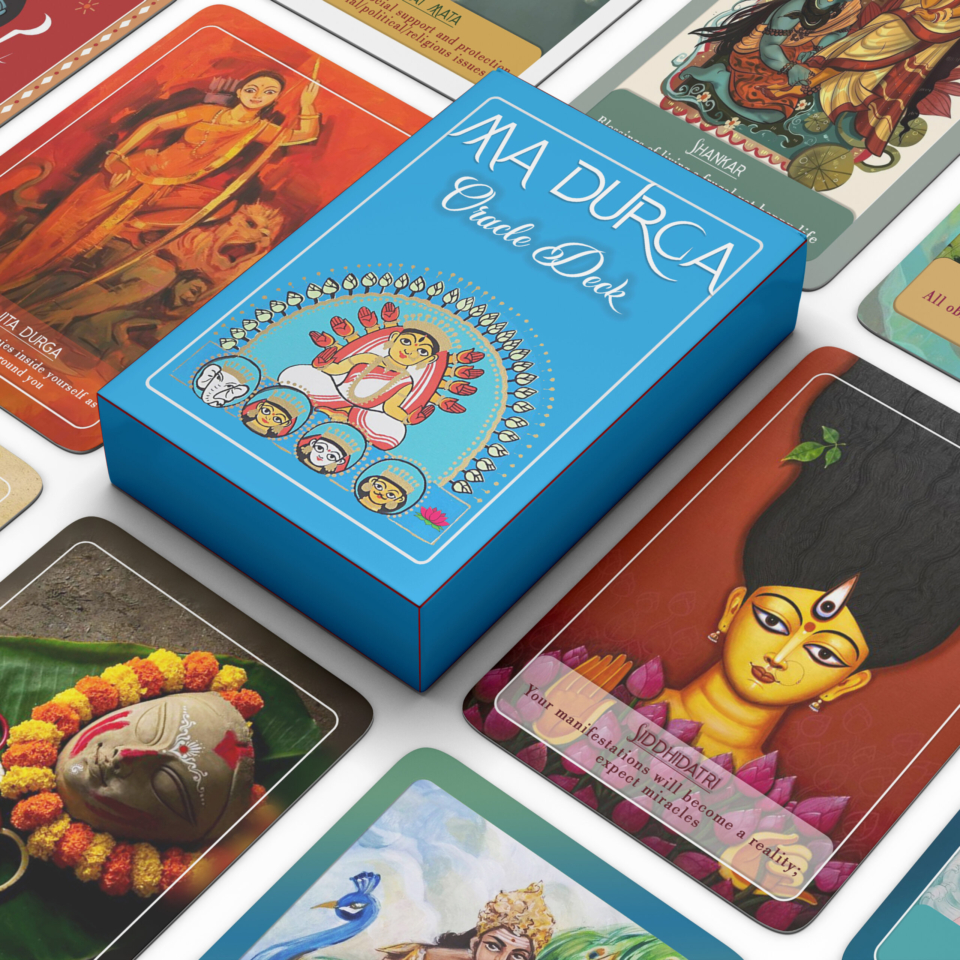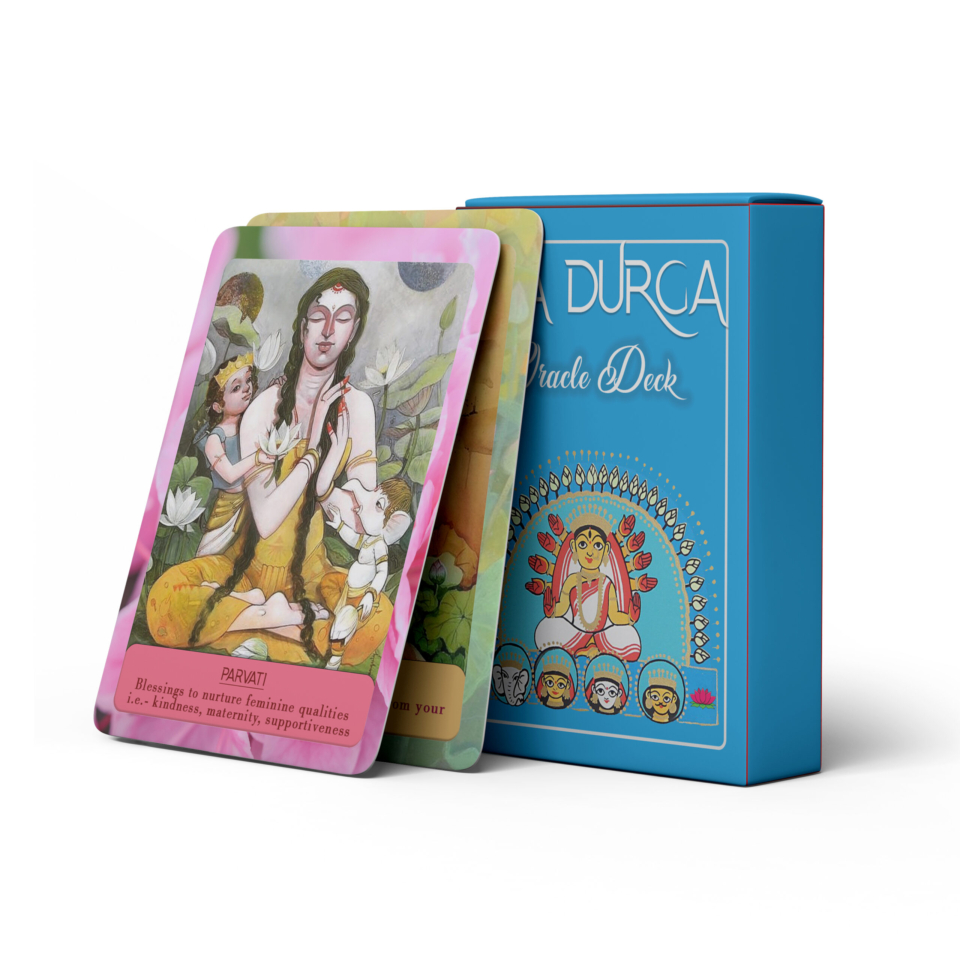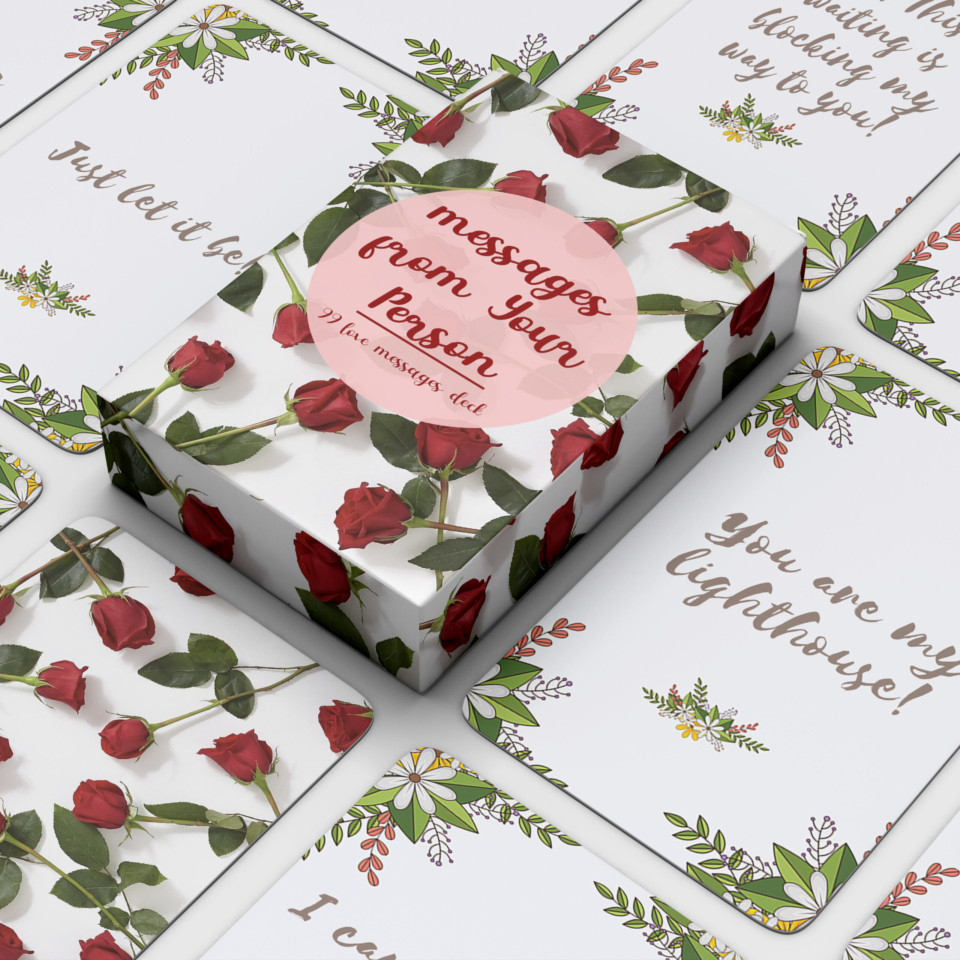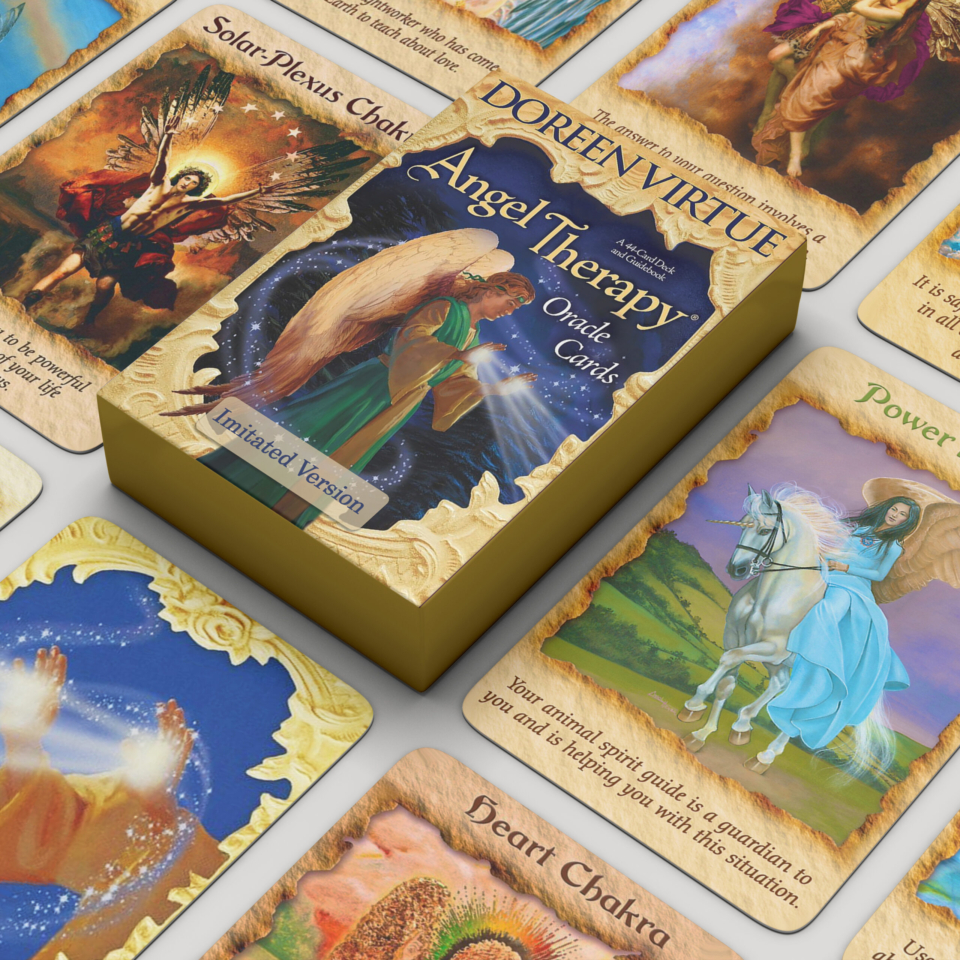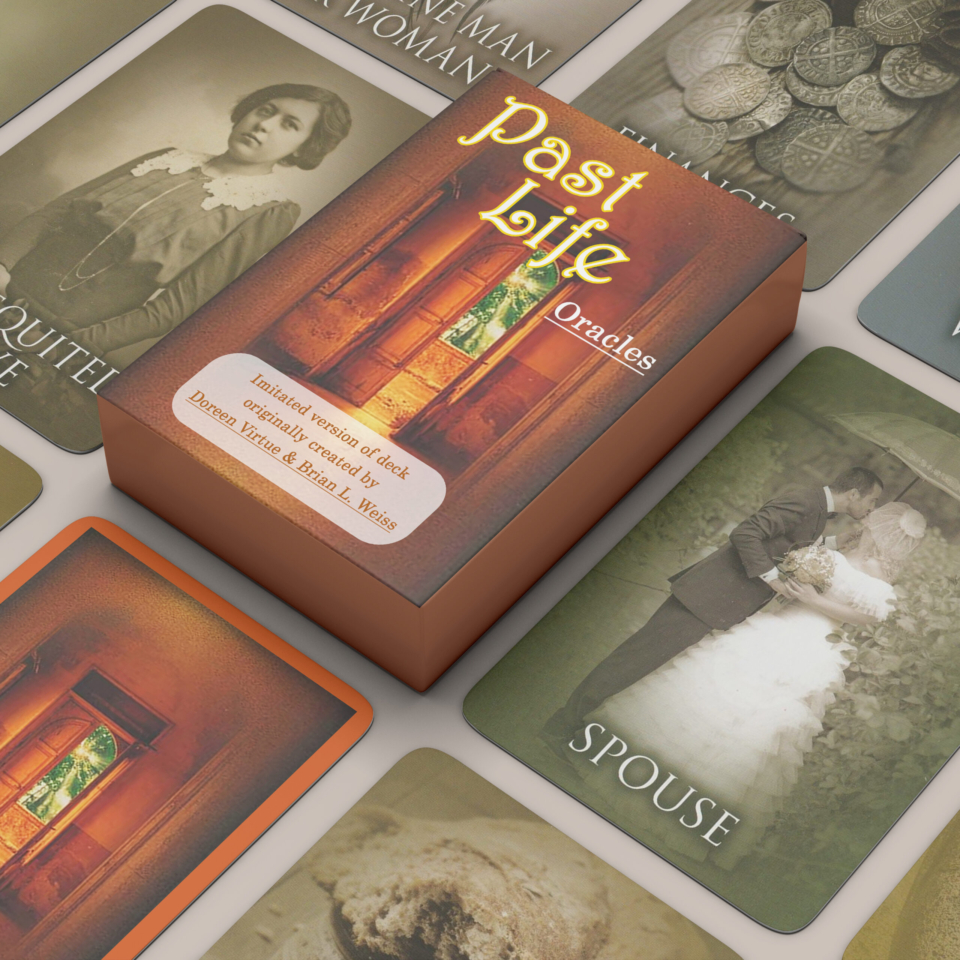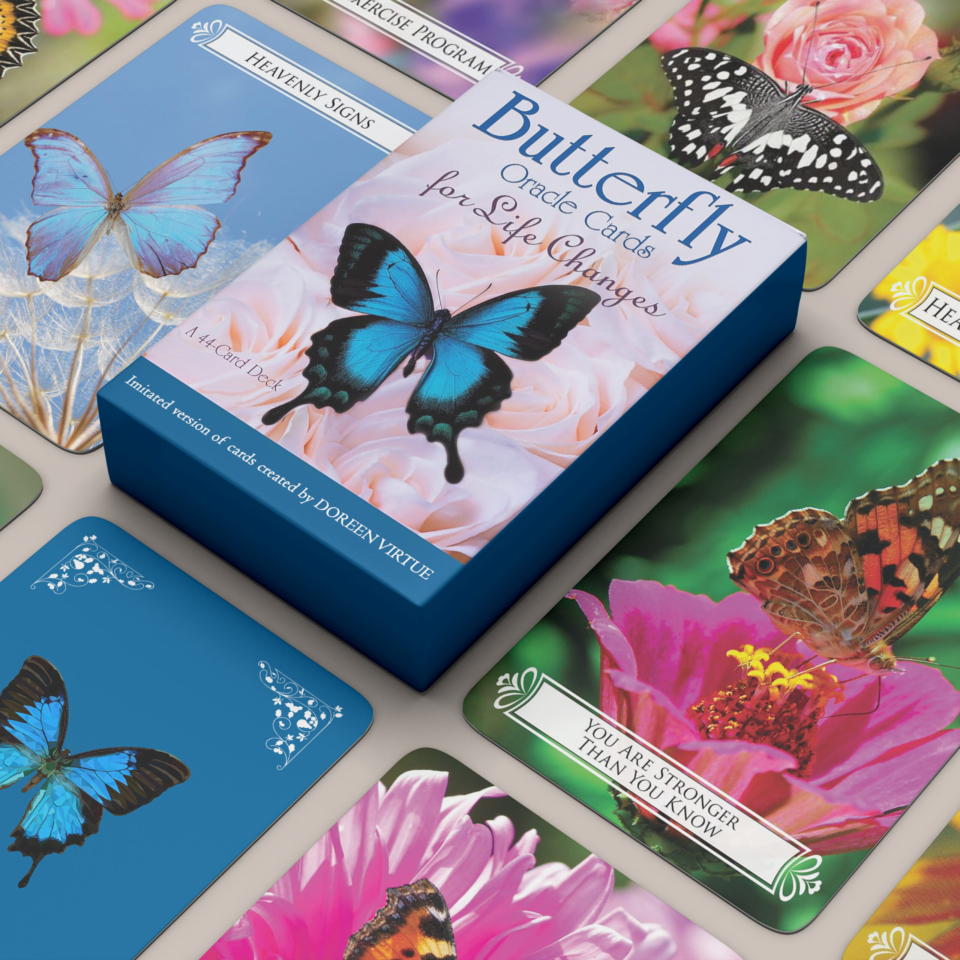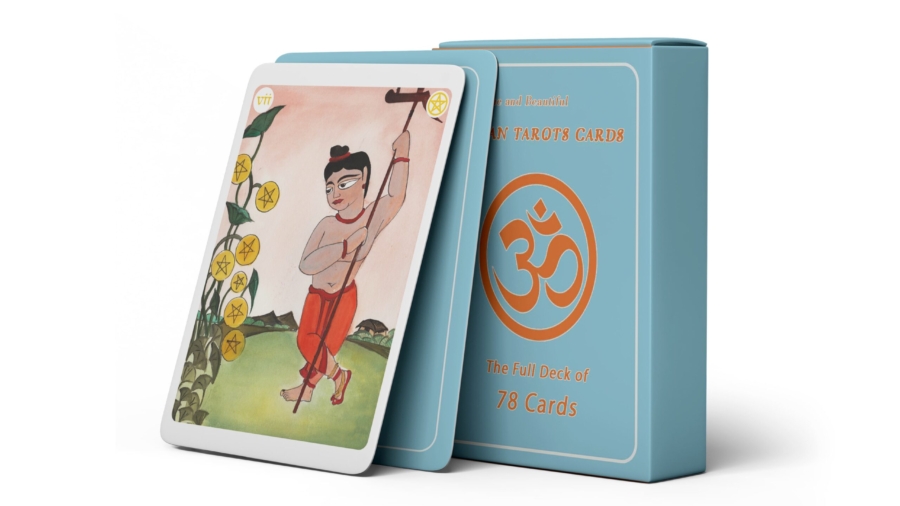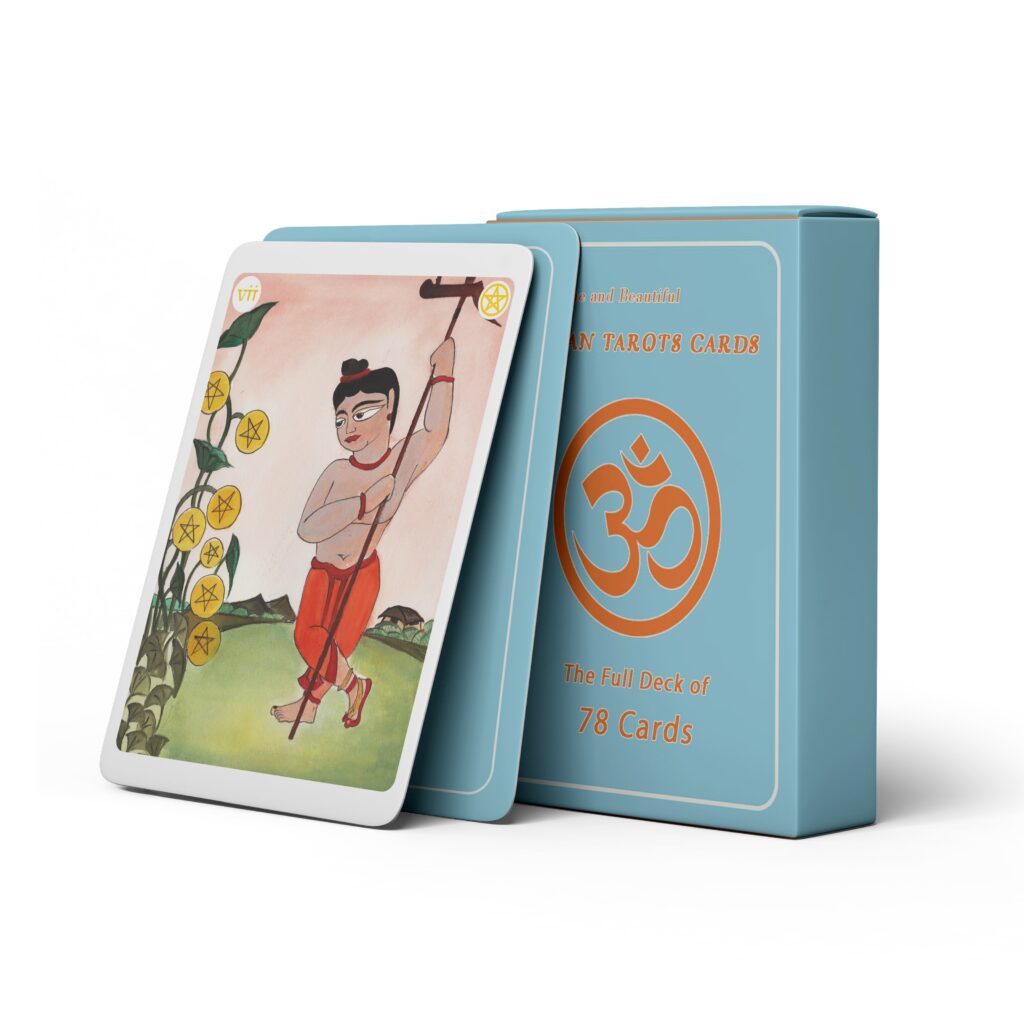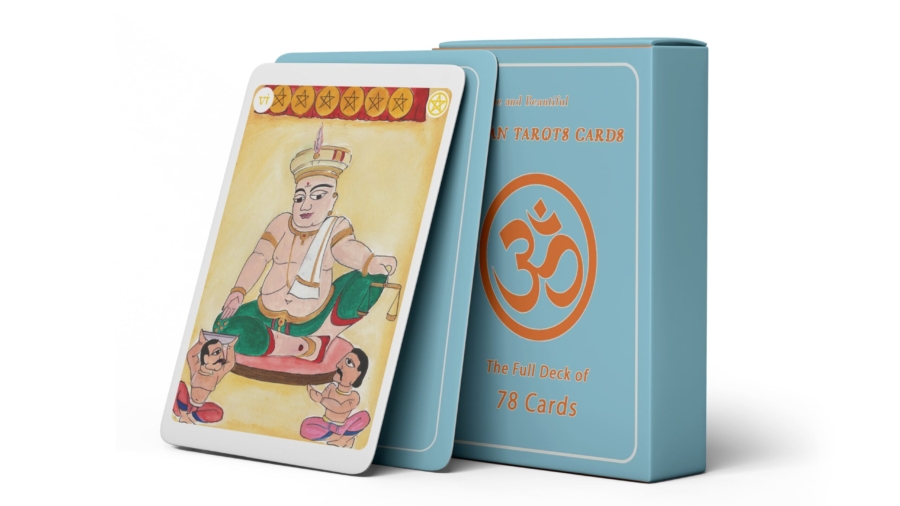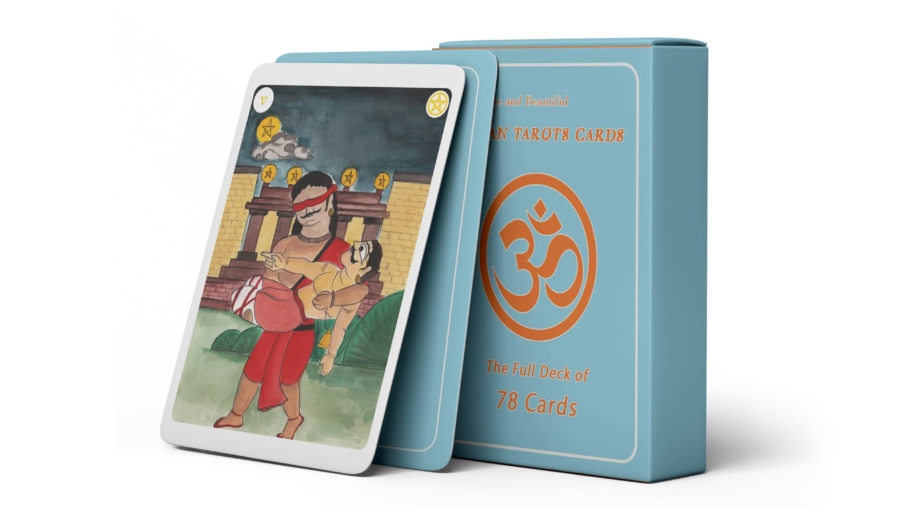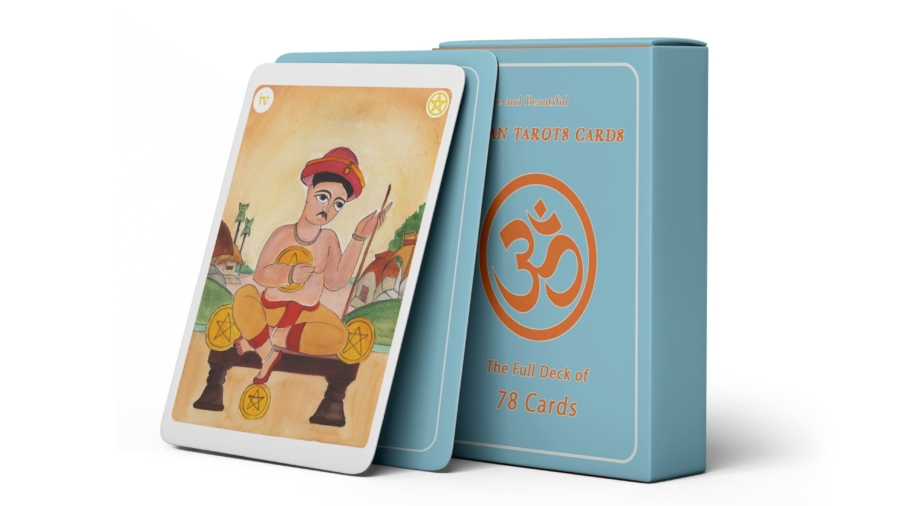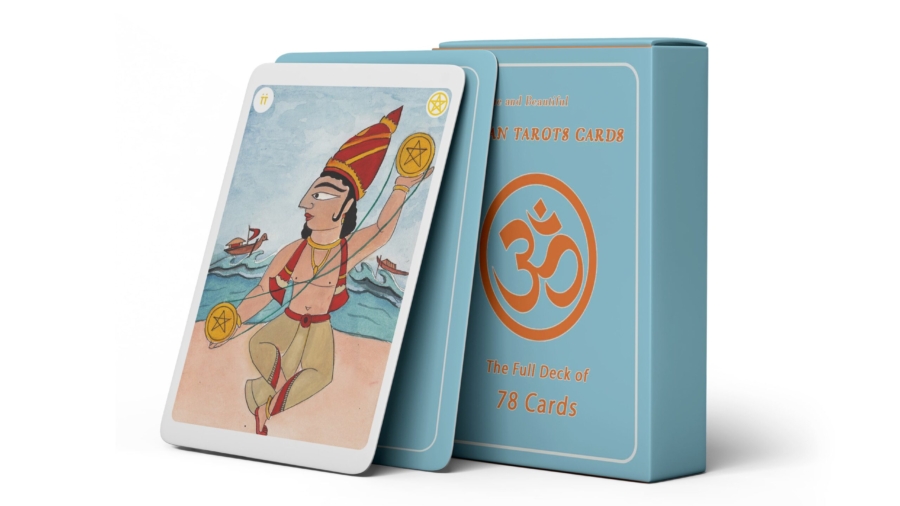
The Page of Pentacles illustrates the beginning of an idea. Here, the page begins to appreciate the material world. He carefully observes the pentacle to make sure he isn’t missing anything. While not a master, the page exhibits the spark of curiosity that begins the path to mastery.
The page stands elegantly in a green field and holds up the pentacle in admiration. There is a stillness to the page that is absent in other page cards. He is carefully observing the pentacle to fully understand it. He is like a man who trying to flesh out a new idea before implementing it. For the first time, the pentacle is of the same colour as the sky. This makes it look as if it is blending in the background. It therefore takes the keen page to distinguish the pentacle from the world around him.
Like in most of the pentacle cards, the landscape is primarily a green field to signify the element of earth. In the background, you can see the tips of a blue mountain range of Himalaya. The page wears a green tunic. This matches the green of the landscape and illustrates spiritual growth and a fertility of ideas. In wearing green, the page, like the pentacle, is in harmony with nature. The page wears a red hat. Traditionally in Tarot, red represents passion and heart.
Upright meaning
The upright Page of Pentacles represents curiosity, opportunity, and practicality. It suggests that you’re eager to learn and explore new opportunities for growth and prosperity. The card encourages you to be practical and to focus on building a strong foundation for your future.
Reverse meaning
The reversed Page of Pentacles can indicate missed opportunities, lack of focus, or a lack of practicality. It suggests that you may be missing out on opportunities for growth or that you’re not being practical in your approach to achieving your goals. The card encourages you to stay focused and to be practical in your decision-making.
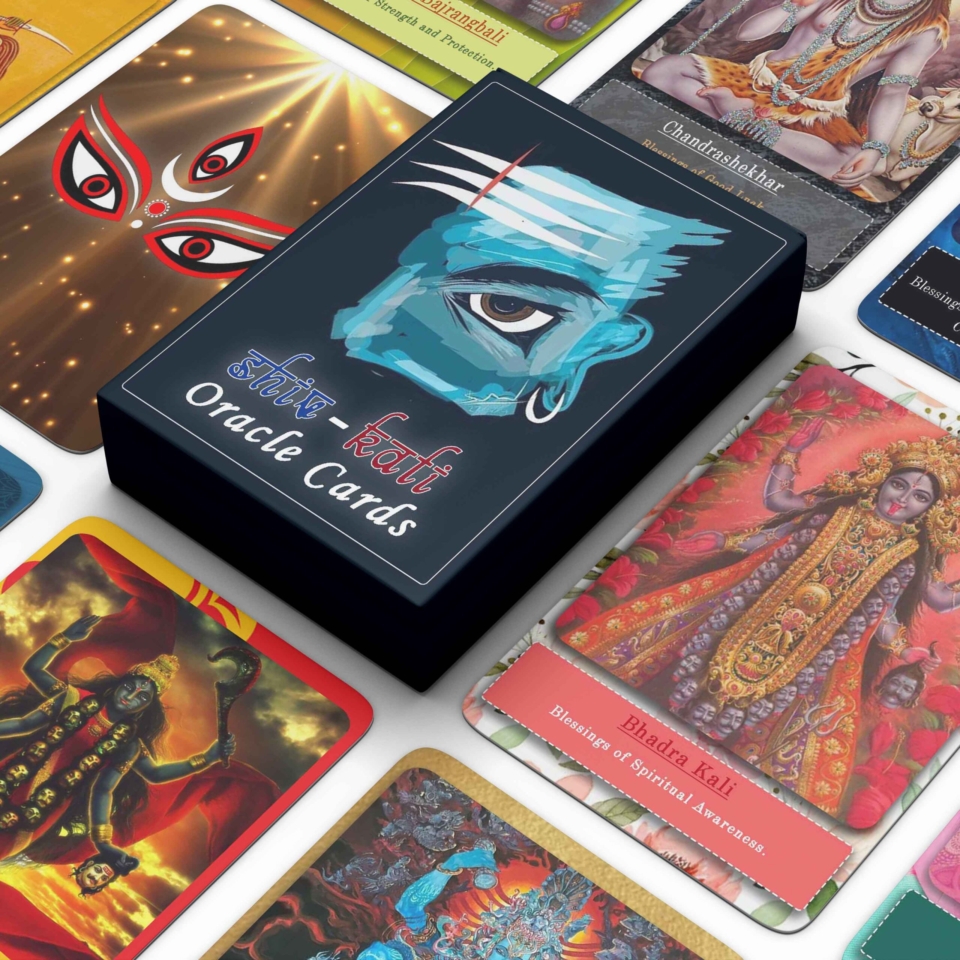

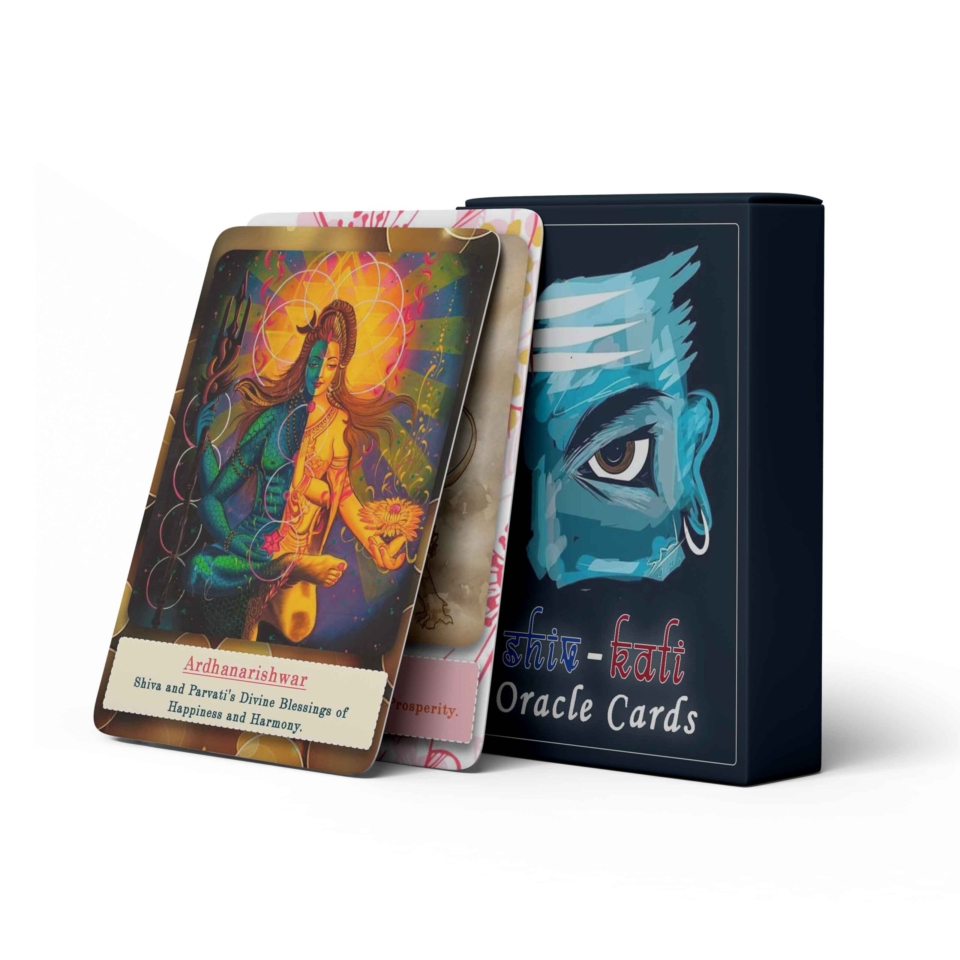
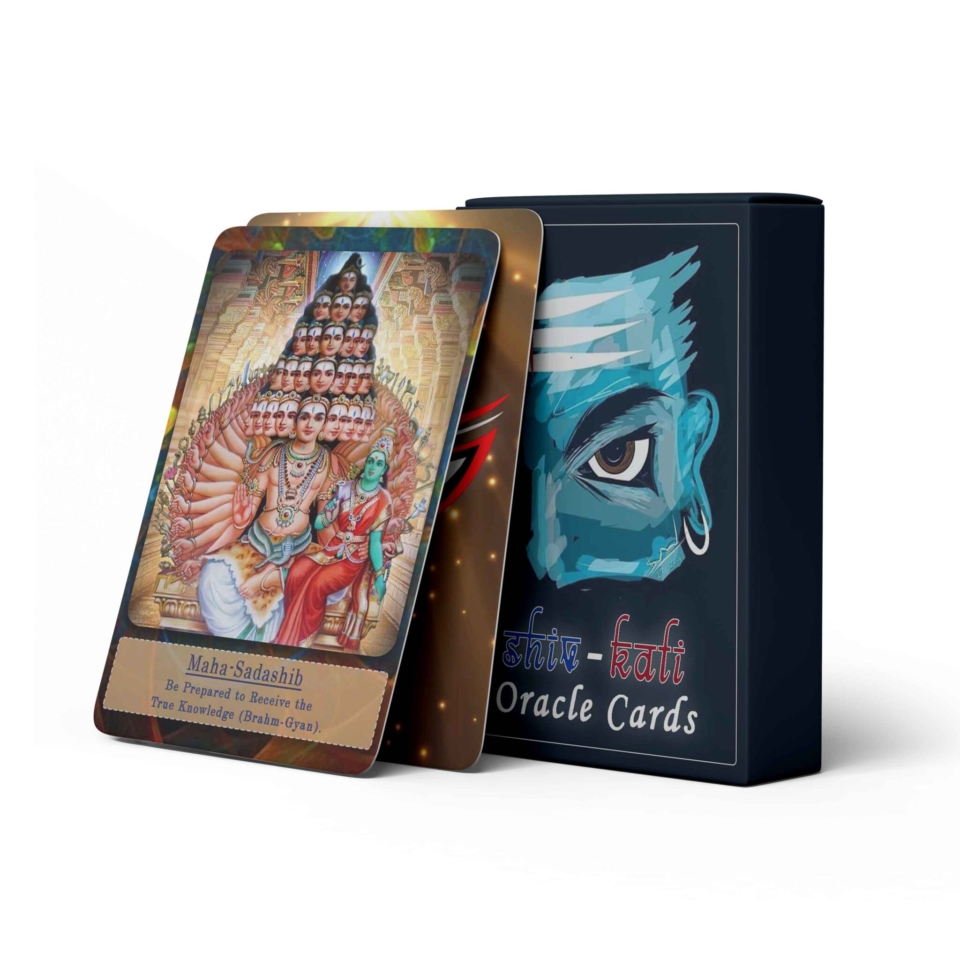
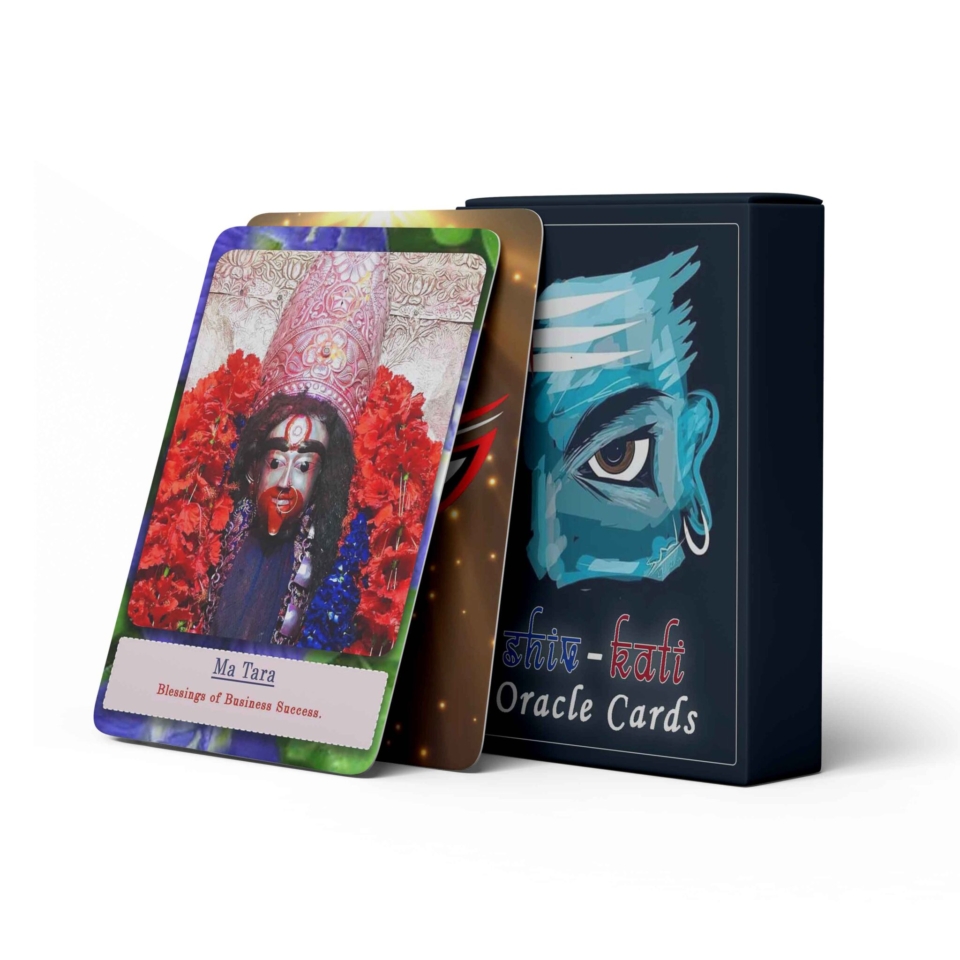

ShivKali Oracle Cards – pack of 24 Cards
- 350 Gsm paper with gloss lamination
- 2 pack designs to choose from
- Free guide materials
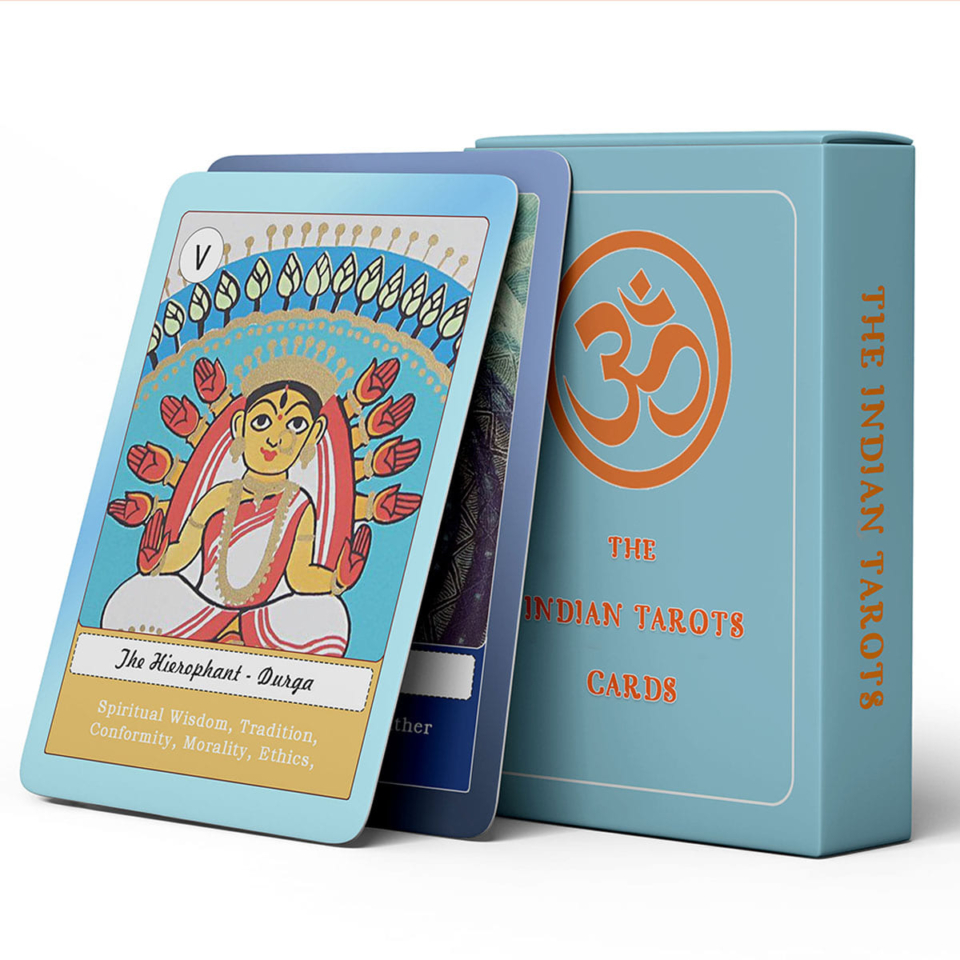

Indian Tarots – Major Arcana – collector’s edition of 22 cards
- 350 Gsm paper with gloss lamination
- Box
- Free guide materials

